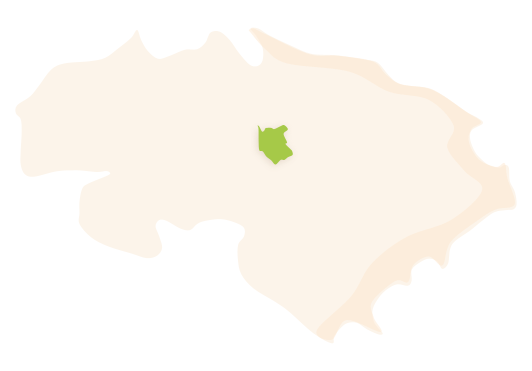Benidoleig is a municipality located in the geographical centre of La Marina Alta, straddling the plain of the River Girona and the Seguili mountain, which closes the municipal area to the south. This small town is situated 131 metres above sea level, with an area of 7.54 km2 and a population of 1,166 inhabitants, who are called Benidolejans and Benidolejanes.
 Benidoleig's municipal district. Surface area: 7.54 km². Population: 1,166 (INE data 2021).
Benidoleig's municipal district. Surface area: 7.54 km². Population: 1,166 (INE data 2021).HISTORY
The town lies at the foot of the mountain range known as Serra del Seguili, in a strategic point that provides an unbeatable panoramic view of the entire River Girona plain, with the Serra de Segària mountain range in the background. The municipal area borders with the municipalities of Alcalalí, Beniarbeig, Benimeli, Orba, Pedreguer, El Ràfol d'Almúnia, Sanet i Els Negrals, and Tormos.
The earliest evidence of human presence is located in the cave called Cova de Les Calaveres, with remains that are 100,000 years old —from the Upper and Middle Paleolithic— and others from the Bronze Age and the Ibero-Roman period. There is also evidence of a Roman oil press in the Plantades area that may have been a part of a Roman villa that possibly existed there between the 1st and 5th centuries AD. However, it was the Muslim era that shaped the current town, with the origins lying in an old farmhouse that facilitated, together with another one called Alcúdia that has since disappeared, the arrival of more Muslim settlers to this area during the 10th century.
The name of the municipality, of Arabic origin, has the prefix 'beni-' ('sons of' or 'of the clan of'). Coromines' hypothesis points to Beni Du'l Hagg, 'the children of the pilgrimage'. With the arrival of the Christians, Benidoleig’s first lord became Hug Folch de Cardona, but the lordship returned to the hands of the monarchy. After several transactions and changes, on February 20th, 1404, Benidoleig achieved its full independence. It should be noted that in 1620 it was granted the title of barony.
Following the expulsion of the Moorish population in 1609, Benidoleig received a settlement charter on September 12th, 1611, with the arrival of seven Majorcan families and four other families from nearby Pego. However, most of these people probably left soon thereafter, since in 1646 only one of the lineages remained. As for the surnames that persist nowadays as a result of the repopulation, it is common to come across family names such as Ballester, Caselles, Far and Llull.
The local economy depends on agriculture, with citrus fruits being the most widespread crops, followed by the production and processing of raisins for mistela.
FESTIVITIES
- The festes majors (main festivities) of Benidoleig are celebrated starting on the first Thursday of August and are held in honour of Saint Bàrbara, La Immaculada Concepció (the Immaculate Conception) and La Santíssima Sang (the Holy Blood).
- The festivities of Saint Vicent Ferrer are celebrated on the Monday following Easter Monday, with the traditional Fireta i Porrat of Saint Vicent.
GASTRONOMY
- It is worth mentioning the typical appetisers of Benidoleig, such as meatballs, the bull amb ceba dish (salted fish tripe with onions), grilled capelins, boiled beans, octopus with sauce, the sang amb ceba dish (fried blood with onions) and the gamba amb bleda dish (prawns with chard).
- Dishes derived from the vegetable garden production such as coques with all kinds of fillings, which can be enjoyed alongside various types of sausages, including the blood sausage, blanquet (the white sausage) or the sobrassada, reminiscent of the old Majorcan settlers.
- Rice is an essential ingredient in the most typical dishes, whether cooked with rabbit and tomatoes, with beans and cardoon stalks, or baked in the oven with cured sausages.
- Other less-known but equally traditional and tasty dishes should be added to this list, such as the garlic and pepper with eel dish or the classic olla.